Whisky Route #4: The Lowlands
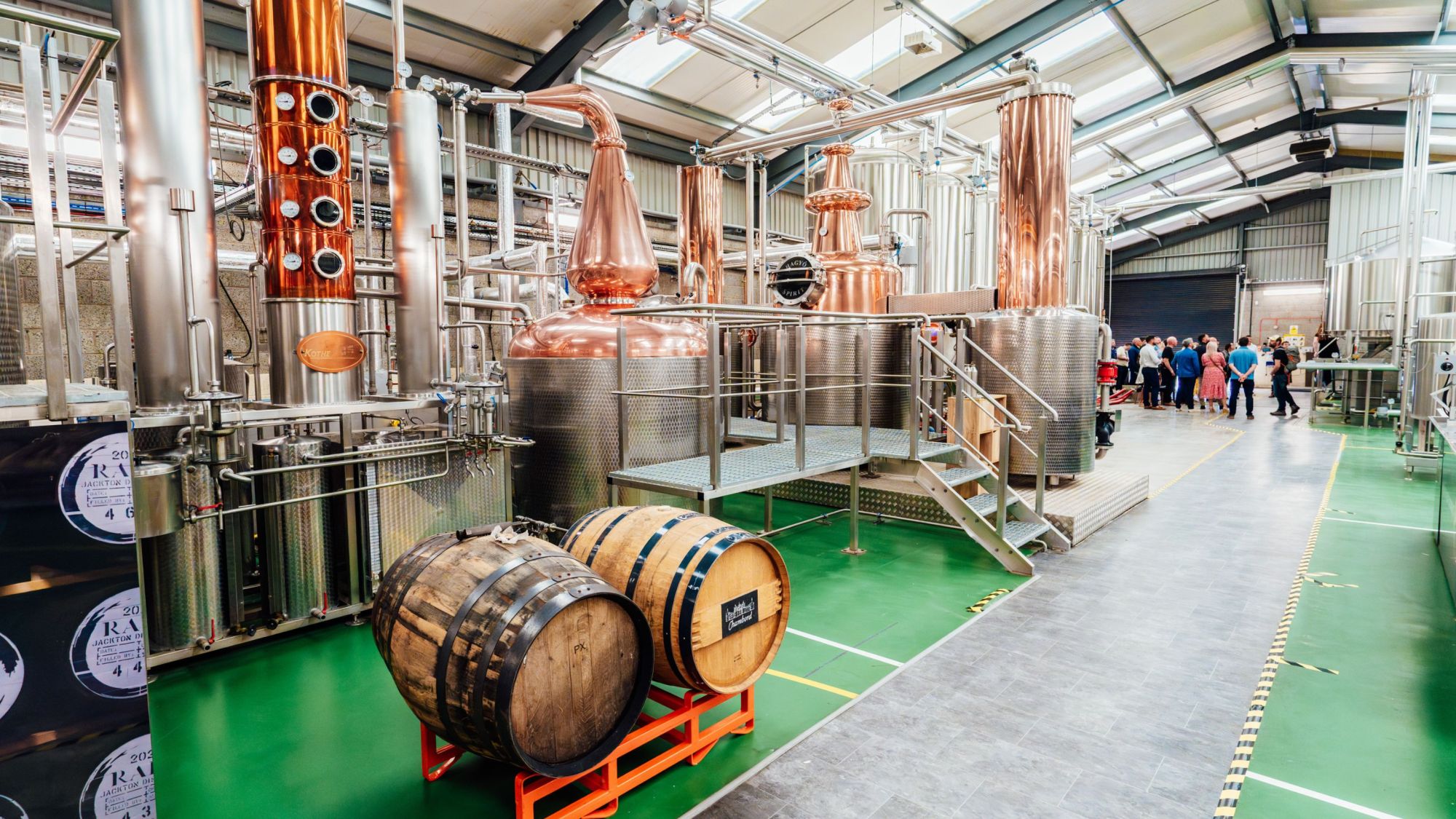
If there is a region that has seen its whisky landscape transformed in the last two decades, it surely is the Lowlands. Historically, a hotspot of whisky merchants, the area produced a spirit considered poor in quality, a reputation caused by distillers who would rush through production with an appallingly fast distillation rate, resulting in a very harsh, raw spirit.
Additionally, this area has been overlooked for decades due to its location near highly popular destinations like the Highlands and Campbeltown. Only a few distilleries are featured in whisky guides, namely Auchentoshan in Glasgow and Glenkinchie near Edinburgh. However, their whiskies are often dismissed as being entry-level and light-bodied spirits.
With a renewed interest in this land’s beauty and historical heritage, the Lowlands are bursting with new distilling ventures, expanding the local whisky profile in flavour and techniques.
For example, Jackton Distillery in South Lanarkshire and Moffat Distillery in Dumfries & Galloway are two new ventures to watch.
Jackton Distillery (RAER Scotch Whisky Ltd)

Photo: Jackton Distillery
Established in 2020, Jackton Distillery is a family-run business located in the village of Jackton, close to East Kilbride in South Lanarkshire (Not too far from Glasgow). Housed in the family’s old farm, the distillery crafts a variety of spirits, including blended Scotch whiskies, gins, and vodkas, all marketed under the RAER brand.
While their single malt slowly matures, Jackton has introduced a trilogy of blended Scotch whiskies finished in sherry casks—Oloroso, Pedro Ximénez, and Amontillado. Launched in June 2024, the Amontillado expression matures in first-fill sherry casks sourced from Jerez, Spain, delivering smooth caramel, ripe peach, and gentle spice flavours.
The distillery was the first in Scotland to use virgin oak casks sourced from the venerated Chambord Estate in France. These casks are also intended to create a limited-edition barrel-aged gin.
With a commitment to a “grain to glass” philosophy, Jackton cultivates its own barley and uses an on-site water source. The leftover grain from production nourishes cattle on the family’s relocated farm, creating a sustainable cycle.
Last but not least, regarding tours and experiences, the distillery opened its doors to the public in August 2024. It features a shop, a tasting bar, and on-site accommodation, aiming to be an accessible tourist destination.
Moffat Distillery (Dark Sky Spirits)
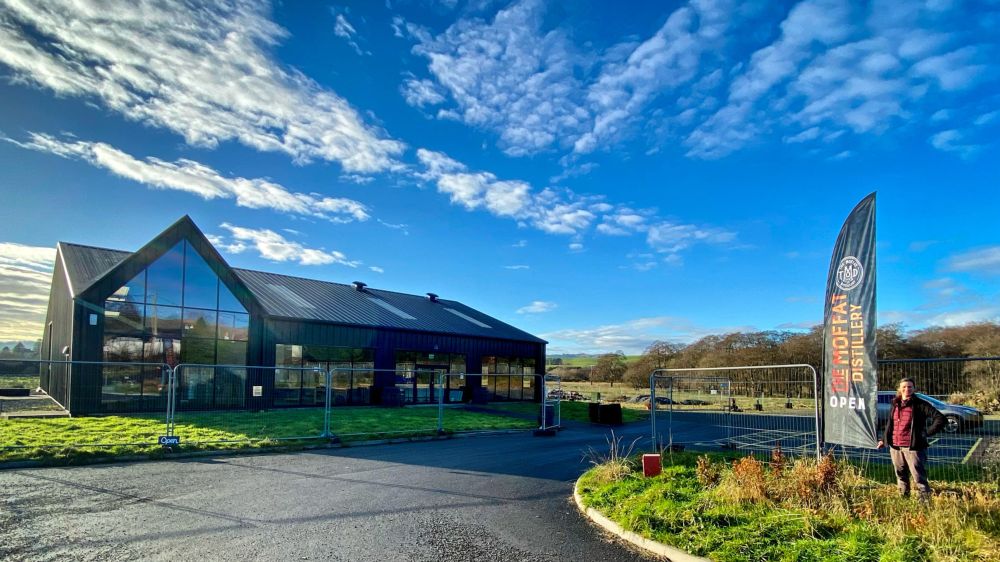
Photo: Moffat Distillery
Established in 2023, Moffat Distillery is the sole wood-fired distillery in Scotland. It is situated on the outskirts of Moffat in Dumfries and Galloway. The distillery focuses on hands-on, sustainable production techniques. It is managed by Dark Sky Spirits and was co-founded by Nick and Erin Bullard in 2017.
The distillery employs wood-fired copper stills, a time-honoured technique thought to add a distinctive richness to its spirits. This method is fundamental to its “ARISE” project, which chronicles the lifecycle of its wood-fired Scotch whisky.
Moffat Distillery prioritises environmental stewardship by utilising chunk-wood biomass for heating, sourcing barley from a family-owned farm in Fife, and targeting self-sufficiency by 2030. The distillery actively participates in local environmental initiatives and intends to establish an on-site coppice to ensure sustainable wood sourcing.
The distillery offers 75-minute Signature Tours, during which visitors can observe the distillation process while sampling blended Scotch whisky, Original Moffat Gin, and fruit whisky liqueurs. Additionally, the distillery organises events such as live music performances and whisky blending workshops.
A trip back in time: Lindores Abbey
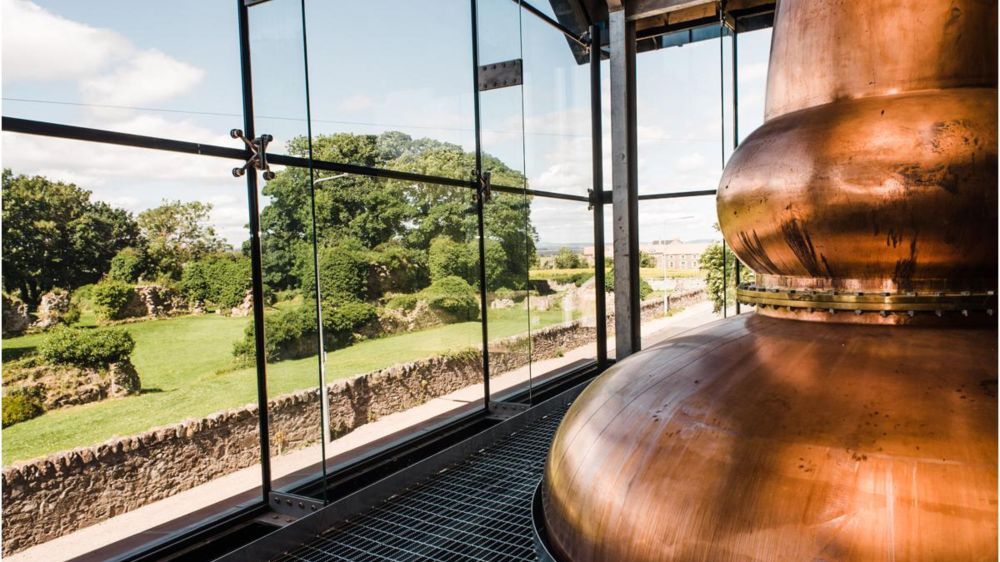
Photo: Lindores Abbey Distillery
We start with our journey in the Kingdom of Fife, where we are set to take a step back in time. Located in Newburgh, a few miles south of Perth, Lindores Abbey Distillery is a living connection between past and present: one of the new distilleries on the scene, it was built on the ruins of the ancient Lindores Abbey, which is considered the “spiritual home of Scotch whisky”. Friar John Cor, a Lindores monk, is mentioned in the Exchequer’s Roll, the earliest written reference to distillation in Scotland, which dates back to 1494.
In connection with this heritage, distillery founders Drew and Helen Mackenzie, whose family owned the Abbey’s ruins, decided to bring back distilling to Lindores. They built the new site in harmony with the ruins and created a building that is both a distillery and a museum.
Focusing on history, Lindores Abbey tries to incorporate as much knowledge from the past into its production as possible. This is reflected in its first product, Aqua Vitae, where the monks used local botanicals as key ingredients. The Apothecary tour is quite a unique experience and makes you feel like an alchemist.
Walking through the abbey ruins while sipping a dram and overlooking the evocative scenery on the Tay is just a wonderful experience. Lindores Abbey is an excellent spot for history geeks and countryside lovers.
Making our way towards St Andrews, we will pass close to Daftmill Distillery, which is both a working farm and a distillery. Although this small producer is not open to visitors, it is a fascinating project. Despite being up and running in 2005, the distillery released its first whisky only in 2017, with great anticipation for whisky enthusiasts.
Whisky University: St Andrews

Photo: St Andrews – VisitScotland
Featuring the oldest university in Scotland, a renowned golf course, and a long, sandy beach, it is no wonder that St Andrews has become a popular hub for international students, golfers, and tourists. Exuding history and not lacking a certain charm, the town is also a strategic place between two exciting whisky spots.
Eden Mill Distillery is located on the banks of the Eden Estuary, offering beautiful views of the picturesque town of St Andrews. The company initially opened in 2012 and began producing spirits in 2014. The distillery was established in buildings salvaged from an old paper mill, alongside the renovation of the nearby Seggie distillery. Although the distillery is currently closed to the public, it is expected to finalise the last details before welcoming visitors very soon. In the meantime, you can book gin and whisky tastings in St Andrews and Edinburgh.
While in St Andrews, you could visit one of the St Andrews Brewing Company brewpubs. They are also great places to fuel up with tasty bites.
A walk on the beach on a sunny day and exploring the ruins of the Cathedral of St Andrews offers a fascinating dive into nature and history.
Heading out of St Andrews is Kingsbarns Distillery, which released its first single malt only in 2018. The buildings are the result of the restoration of a derelict farmstead. The Weymiss family, who owns the distillery and runs an independent bottling company, has done a great job polishing the rustic buildings, which now host not only the distillery but also a shop and a lovely cafe with a nice view across the farmland. This is an interesting stop as it allows us to see the development of young whisky throughout the years and taste Darnley’s Gin.
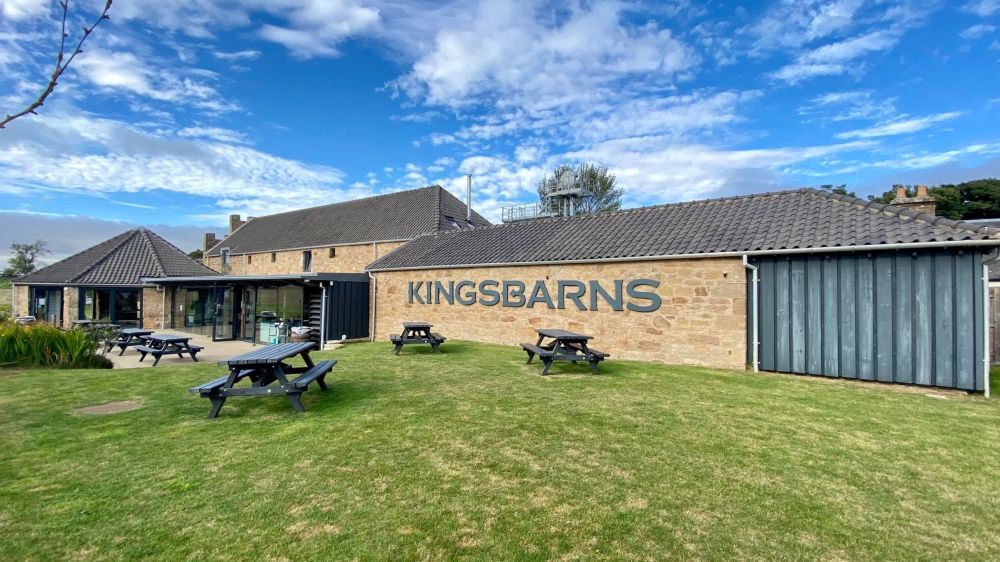
Photo: Kingsbarns Distillery
Southern Fife drive-through
Encompassing Southern Fife, heading towards Kirkcaldy and Leven, a series of distilleries (sadly not open to the public) are worth mentioning as they are essential names in the whisky world.
One of Diageo’s power plants for grain Whisky is Cameronbridge. The impressive industrial factory is also Europe’s largest and oldest operating grain distillery. It is the backbone for the company’s blends and single-grain expressions such as Cameron Brig and Haig Club. Since 1998, they have also made Tanqueray’s gin and Smirnoff vodka.
Nearby is the playhouse for whisky creators at Diageo: Leven Distillery. Although pretty much unknown to the public, this distillery is equipped to prepare any style of whisky the company may want to produce. Starting as a bottling plant, it is now a centre for production and flavour experimentations, with various stills and other equipment to showcase the company’s innovation in Scotch whisky.
Another distillery known for its focus on experimentation and innovation is the smaller, independent InchDairnie Distillery located in Glenrothes, Fife. It features unique equipment, including a mash filter instead of a traditional mash tun and a hammer mill. The distillery uses a blend of brewing, wine, and whisky yeasts to achieve its goal of producing new styles of whisky, including one of the very few rye whiskies made in Scotland.
A Royal Dream: Edinburgh

Photo: VisitScotland – Kenny Lam
We leave Fife to head south, cross one of the suggestive bridges on the Firth of Forth (one of which, currently closed, dates back to 1890) and hit the dazzling capital of Scotland: Edinburgh. Needless to say, this urban pearl is one of the most visited locations in the UK: from its world-famous castle, the fascinating architecture, to its vibrant cultural life (with a whole lot of international festivals taking place here in August), the city is almost a compulsory destination for anyone visiting Scotland.
Visitors can truly enjoy the vibrant whisky culture in the area. The city features an exciting array of bars and shops, creating an incredible trail for whisky enthusiasts to explore. For more information about its whisky scene, check out our blog post on the best whisky spots in the Scottish capital: “On the Whisky Trail in Edinburgh.”
However, for the past decades, the Scottish capital has not been able to offer a working distillery for eager whisky tourists to visit. In fact, almost the only option was a trip to Glenkinchie Distillery, which, at a half-hour drive from the city centre, remains a nice place to visit for its rural setting in the Lothian countryside. It’s also a much-recommended destination for its museum, where they even have a miniature of a working distillery, which allows for a broad overview of the whisky-making process.
To cater to those who couldn’t travel beyond the city, industry members came together to create the Scotch Whisky Experience. This attraction offers a good opportunity to learn about whisky without focusing on any specific brand. Additionally, if you’re interested in enjoying Johnnie Walker, you can visit the Johnnie Walker tourist attraction on Princes Street, which is not too far from the town centre.
New kids on the block: Holyrood and Port of Leith
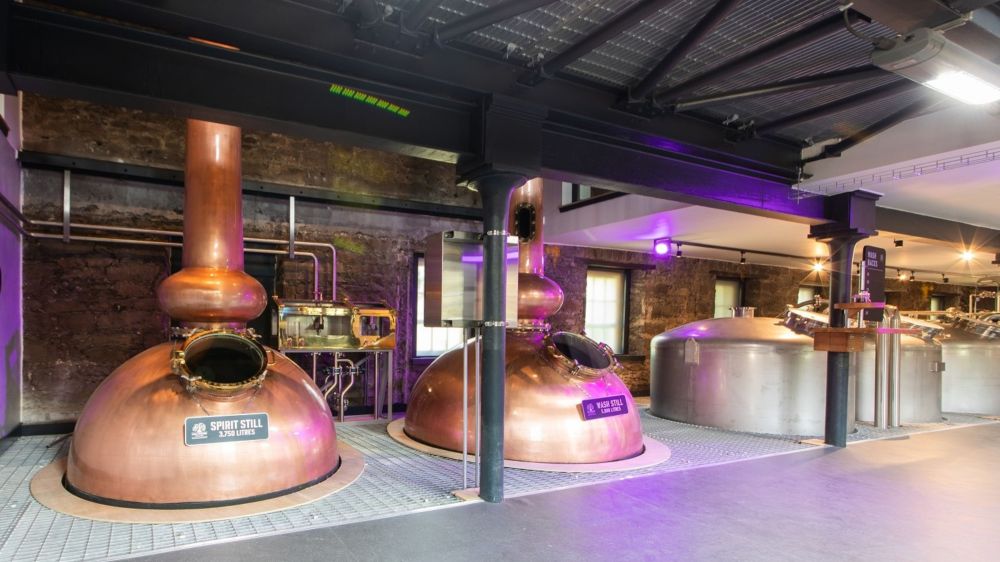
Photo: Holyrood Distillery
Holyrood Distillery is a contemporary whisky and gin distillery located in the heart of Edinburgh, Scotland. Founded in 2019, it holds the distinction of being the first single malt whisky distillery to operate in the city centre in nearly a hundred years. Housed in a renovated goods building from the 19th century, the distillery harmoniously blends historical architecture with modern design. Known for its innovative spirit-making methods, Holyrood Distillery employs heirloom barley varieties and unique fermentation techniques to craft exceptional flavours. The venue is fully accessible, featuring facilities catering to visitors of all ages. It is conveniently situated near Holyrood Park and the Royal Mile, making it an attractive spot for whisky lovers and tourists exploring Edinburgh.
Another one to visit is the Port of Leith Distillery, the UK’s first vertical whisky distillery in Edinburgh’s historic Leith district. This innovative nine-storey structure was conceived to maximise space on a compact site. The distillery is committed to sustainability, using 100% green electricity and plastic-free packaging. Their whisky production involves sourcing barley from a single farm near Edinburgh and collaborating with Heriot-Watt University to explore yeast and fermentation techniques. While its single malt whisky matures, it offers “Table Whisky,” a single-grain spirit aged in virgin oak and sherry casks.
The top floors feature a bar and restaurant with panoramic views of Edinburgh and the Firth of Forth. Guests enjoy a selection of whiskies, cocktails, and seasonal dishes made from local ingredients. Port of Leith Distillery offers guided tours showcasing their production process and spirit tastings. Visitors can also fill and label a miniature bottle of New Make spirit as a keepsake.
Nevertheless, the capital is not the only city experiencing an incredible whisky surge.
Rolling on the river: Glasgow

Photo: Once Upon a Whisky
Hopping from the central belt to the west coast, we encounter Glasgow, Scotland’s largest city. Often overlooked in favour of the historic beauty of Edinburgh, Glasgow may lack the same elegant charm, but it has much to offer. The city boasts a vibrant and diverse cultural scene, making it one of the most important music hubs in the UK, with many major concerts held here rather than in Edinburgh. Additionally, Glasgow features a striking contrast between historic buildings and modern architecture. All of this is intertwined with the often vibrant flow of the River Clyde, which played a vital role in making Glasgow a key port for shipbuilding.
The whisky culture here is just as lively: check our guide on where to drink whisky in Glasgow to navigate the local whisky drinking scene! (Make sure you add the world-famous Bon Accord whisky bar to your list!)
As for Edinburgh, the choice of whisky distilleries to visit was not huge until recently. For years, the one to see has been Auchentoshan Distillery. Although far from being the prettiest plant, Auchentoshan is an exciting place to visit as it is the only one in Scotland to triple-distil all the whisky produced in it. Triple distillation, usually related to Irish whisky, gives the spirit an extraordinarily light and drinkable character, to which maturation adds fascinating notes.
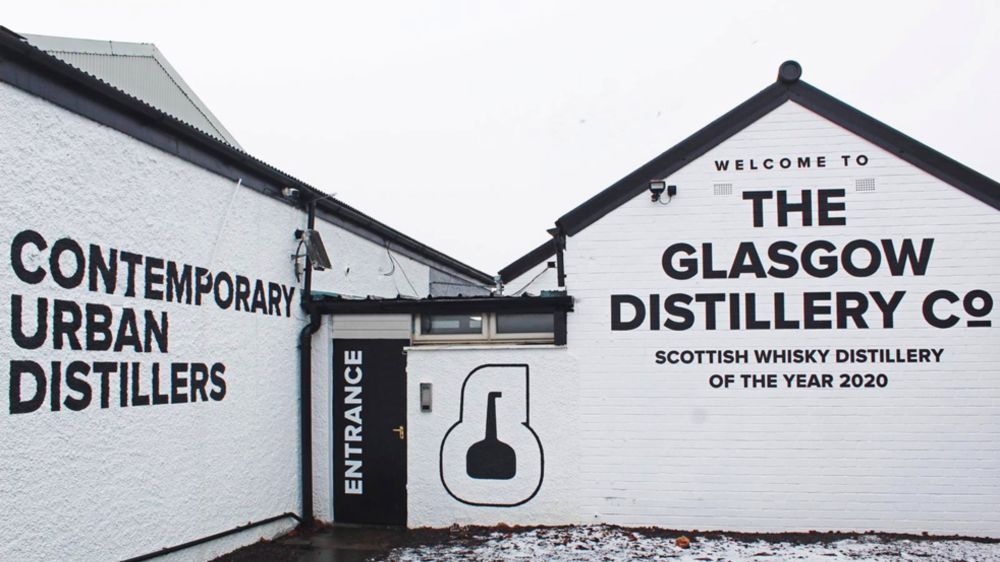
Photo: Glasgow Distillery Company
Following the whisky boom, Glasgow has opened two working distilleries. Glasgow Distillery opened its doors in 2015 in Hillington Business Park and began releasing its first single malts in 2018. While they do not have a visitor centre, you can find a wide variety of their whiskies available for purchase at various bars and shops throughout the city. For whisky shopping, we recommend The Good Spirits Company on Bath Street.
The second to come was Clydeside Distillery, which is wonderfully placed on the banks of the Clyde, Queen’s Docks – whose pumphouse is today part of the distillery. The building, with the distillery and the visitor centre, perfectly blends in a modern and sleek design with the historic monuments it incorporates. The Virtual museum inside is quite unlike any other tour experience, as it focuses on the history of Glasgow as a whisky commercial centre and the people who made this history possible. After the tour, please indulge in a whisky and a chocolate, you won’t regret it.

Photo: The Clydeside Distillery
If you have time for a detour, head to Wishaw and get seated for a meal at The Artisan restaurant. Between each bite, have a go at some of the over 1300 whiskies they have on the menu!
Below the Belt: Ayrshire, Dumfries & Galloway and the Borders
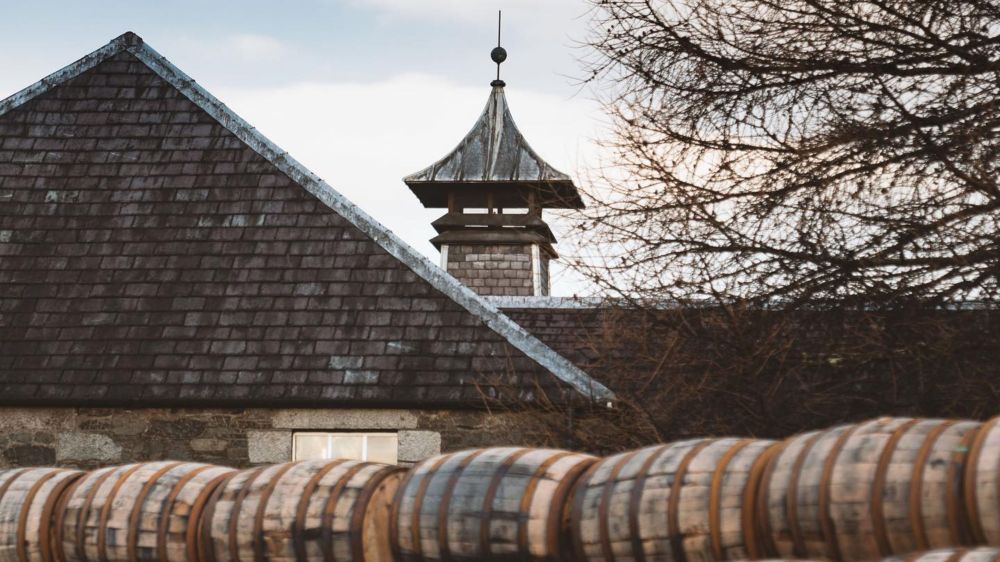
Photo: Bladnoch Distillery
Heading south toward the west coast, we cross the Ayrshire region—a worthy stop for a stroll on the beach in Ayr, where you can enjoy some ice cream (but watch out for the seagulls!). As we take in the beautiful coastal views, we drive toward Dumfries and Galloway. Along the way, you’ll pass the grain distillery in Girvan and the single malt producer Ailsa Bay, both owned by William Grant & Sons. While the Girvan distillery primarily serves as a workhorse for the brand’s blends (although a single grain version has recently been released), Ailsa Bay is a relatively new distillery, founded in 2007. Originally designed to create Grant’s blend, it released a single malt in 2016, aiming to balance a sultry character and light peat with sweetness. With eight stills shaped like those at Balvenie, Ailsa Bay produces a variety of whisky styles.
Though neither distillery offers visitor facilities, it’s worth noting their locations. A quick visit to Girvan, a charming fishing town, is recommended. Now, let’s get ready for some proper whisky tasting! Continuing past Galloway Forest Park—the largest in the UK, complete with trails for outdoor enthusiasts—our next stop is near Wigton, a city that has a remarkable distillery saved from disaster.
Bladnoch Distillery was liquidated in 2014 and later purchased by Australian David Prior. The stills were revitalised in 2017. The distillery aims to explore the Lowland whisky styles from the 1800s and serves as a great example of the conversion of an old farmhouse. Located by the River Bladnoch and near the seaside, it is a superb distillery to explore, along with the surrounding area.
Driving east along the border with England, we arrive at the charming town of Annan, located on the northern shore of the Solway Firth. This town is worth a visit, with its high street lined with historic buildings that house local shops and cafes. Distilling has played a significant role in the region’s history, but it wasn’t until 2014 that spirits began flowing again from the newly established Annandale Distillery, which had been closed since 1921. The old sandstone warehouse walls give the distillery an industrial and historic appeal, while the former maltings have been transformed into a visitor centre, resembling a quaint village. Their first two releases, Man O’ Words (unpeated) and Man O’ Swords (peated), pay tribute to Robert Burns and Robert the Bruce.
Our final whisky stop on the route is Hawick, the largest town in the Scottish Borders. In 2018, whisky production resumed in this region for the first time since 1837, thanks to the aptly named Borders Distillery. The distillery features a blend of preserved Victorian buildings and modern, elegantly designed interiors. This lovely experience is easily accessible from the town centre, which is also where our tour concludes. Be sure to pick up some of the town’s famous knitted goods!
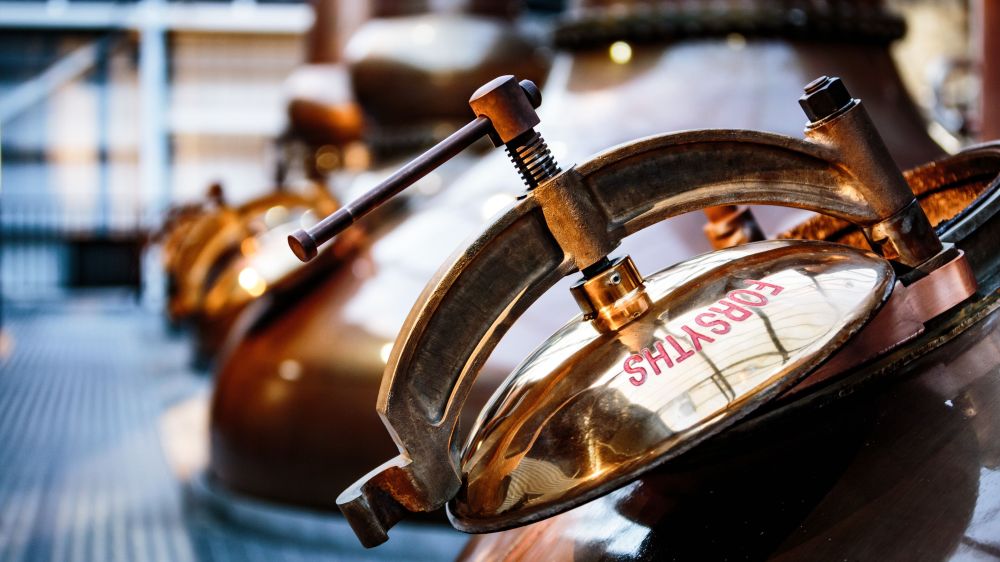
Photo: The Borders Distillery
Festivals & Events
- Glasgow Whisky Festival: This great festival takes over Hampden Park Stadium each year and offers an incredible array of tastings, talks, and events for whisky lovers.
- National Whisky Festival: Another pearl of Glasgow usually takes place in an old warehouse (The SWG3). It’s a fantastic and vibrant event that combines live music, exhibitors, and delicious food.
- Edinburgh Whisky Festival: An Edinburgh staple for whisky lovers, it usually takes place at the Murrayfield Stadium, allowing you to wander around the venue whilst sipping on some delicious tasters.
- Fife Whisky Festival: This is a relatively new festival that takes place in March in Cupar—but have a look at the happenings around all the other whisky places in Fife over the weekend! It’s a fresh and independent festival with a lot to offer.
Whisky journey top tip #4: Dress to impress (the weather and the warehouse!)

Photo: Once Upon a Whisky
Any sensible travel requires some research into the local weather conditions. For Scotland, you will want to wear a layered outfit and always have a waterproof and windproof jacket at hand (umbrellas will mostly be made unusable very soon by the sudden gusts of wind that may arise).
Jokes aside, there is a valid reason why people say you can see the four seasons in a day in Scotland. Be prepared to be kissed by the sun and hit by hail on the same day.
Most importantly, on your whisky travel, you will surely want to sneak (on a tour, legally!) into one of those musty warehouses where our beloved spirit takes shape and flavours in the casks. Even on a warm day, some of these buildings can get pretty chilly, and as much as a few drams may make you feel warmer, always bring an extra layer! You’ll savour the whisky much better without shaking or chattering your teeth.
Continue reading…
Whisky Route 1: The North Coast 500
Whisky Route 2: The Malt Whisky Trail – Speyside [World’s Whisky Capital]
Whisky Route 3: Whisky Hopping Across the Highlands
Whisky Route 5: A Hebridean Trail
Whisky Route 6: Islay and Jura – Spiritual Whisky Capitals
Author Federica Stefani Whisky Writer & Jornalist
